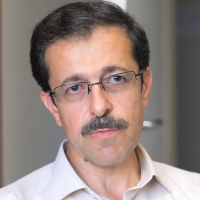The Effect of Low-frequency Stimulations on Perforant Path Kindling Rate and Ultrastructural Changes of Dentate Gyrus in Rat
Author(s):
Abstract:
Background and
Purpose
Application of low-frequency stimulation (LFS) induces anticonvulsant effects. In this study, the effect of changes in LFS frequencies on its anticonvulsant effects in kindling model of epilepsy was investigated by determining the behavioral and ultrastructural changes. Methods and Materials: In this experimental study, 45 Wistar rats weighing 250-280 g were used. For induction of kindled seizures, stimulating and recording electrodes were implanted in perforant path and dentate gyrus respectively. Animals were stimulated in a rapid kindling manner. Different groups of animals received LFS at different frequencies (0.5, 1 and 5 Hz) following kindling stimulations and their effects on kindling rate were determined using behavioral and electrophysiological studies. After stimulating the animals for 7 days, they were killed and their dentate gyri were sampled for ultrastructural studies under electron microscopy. For data analysis, one-way and two-way ANOVA, LSD, Kruskal Wallis and Mann Whitney U were used in Statistica 2. Results
Different LFS frequencies had a significant inhibitory effect on kindling rate and decreased after-discharge duration and the number of stimulations to achieve stage 4 and 5 seizures significantly. In addition, application of LFS prevented the increase in the post-synaptic density and induction of concave synaptic vesicles following kindling. There was not any significant change between anticonvulsant effects of LFS at different frequencies. Conclusion
Obtained results show that LFS application can prevent the neuronal hyper-excitability by preventing the ultrastructural changes during kindling, and can exert its anticonvulsant effects.Language:
Persian
Published:
Journal of Sabzevar University of Medical Sciences, Volume:17 Issue: 2, 2010
Page:
97
https://magiran.com/p793542
مقالات دیگری از این نویسنده (گان)
-
Effect of High- and low-frequency stimulation of olfactory bulb on open field activity monitoring indices in kindled rats
Parisa Zarei, Amir Shojaei, Yaghoub Fathollahi, Mohammad Reza Raoufy, Javad Mirnajafi-Zadeh *
Journal of Pathobiology Reaearch, Spring 2022 -
Effect of Deep Brain Stimulation in The Ventral Tegmental Area on Neuronal Activity in Local and Remote Brain Regions in Kindled Mice
Parisa Esmaeili Tazangi, Faisal Alosaimi, Fatemeh Bakhtiarzadeh, Amir Shojaei, Ali Jahanshahi, Javad Mirnajafi-Zadeh
Cell Journal (Yakhteh), Apr 2023



